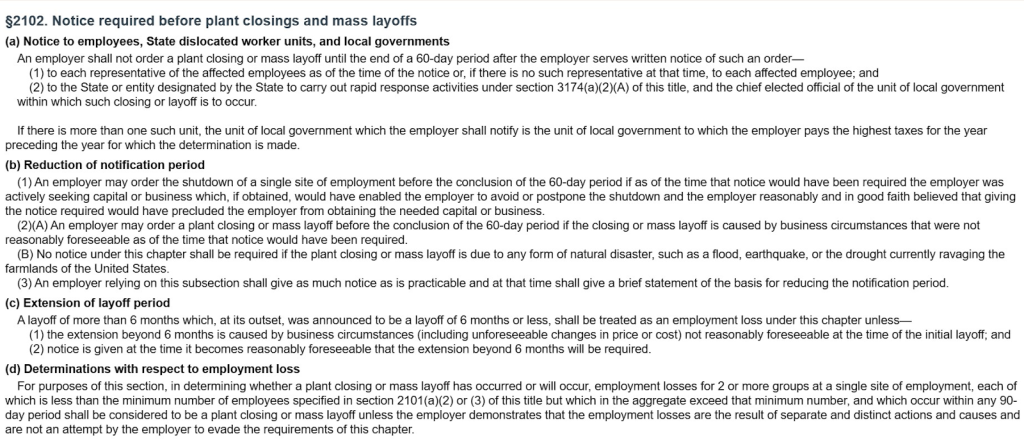As long as you hold a senior position or work in the human resources department, you’re bound to deal with employee termination at some point. But despite the number of times you do it, it remains one of the most sensitive and challenging tasks.
Therefore, despite your reasons for employee termination, the process demands not only a compassionate approach but also clear and professional communication.
Enter employee termination emails.
In this article, you’ll learn how to write a termination email that preserves the employee’s dignity while upholding your organization’s reputation. But first.
What Is a Termination Email?
A termination email is a formal notice sent by an employer to an employee to inform them of the termination of their employment contract via email. It is a professional way to convey your decision and provide necessary details related to the employee termination process (we’ll discuss this in the next section).
The termination email also serves as an official record of the termination. So, it can be used as evidence in any future legal disputes that may arise between the employer and terminated employee.
Termination emails are typically used in situations where a face-to-face meeting is not possible, or in conjunction with an in-person or virtual meeting. There are various reasons employers send termination emails. These may range from employee performance issues to a restructuring of the company, a violation of company policies, redundancy, or the end of a contract.
Image by rawpixel.com on Freepik
How to Write a Termination Email
To navigate the complexities that come with any communication about terminating employment contracts, there are steps you must consider and follow. Follow these while writing a termination email.
1. Notify Employee of Their Date of Termination
Notifying an employee of their date of termination is a critical step in the termination process. In fact, you need it at the top of your email, acting as the opening line, typically right after your greeting.
Keep your email straightforward. For example, use clear phrases like “Your last day of employment will be [specific date].”
Ensure you specify the exact date and, if applicable, the time of the termination. This prevents any ambiguity and ensures the employee knows exactly when their employment officially ends or their last day of work.
The date you include should ensure you fulfill legal or contractual obligations. Unless you are firing an employee with cause, which allows immediate termination, most contracts allow for a probationary or notice period.
Therefore, be aware of local labor laws and regulations that govern termination notices when considering employees’ termination dates. Failure to comply with legal requirements can lead to dire legal consequences for the company. For instance, the US has the Worker Adjustment and Retraining Notification (WARN) Act.
This labor law protects employees by requiring most employers with 100 or more employees to provide a 60-day notice period in the case of planned closings and mass layoffs. Failure to factor in such a law when notifying employees of their termination date will lead to otherwise unavoidable lawsuits.
As a final tip, know that you may also include the date of termination in your subject line. This will help ensure the employee knows what the email is about from the get-go. You can use AI templates to generate concise email subject lines. All you need to do is post your email body to the template, and the tool will generate many options for you.
2. State Accurate Reason for Termination
As we discussed earlier, there are a couple of reasons for termination, from poor performance to misconduct, and even company restructuring. Therefore, a generic employment contract termination email will not cut it.
Keep your employee termination reasons specific; ambiguity will only create the potential for legal complications. Here’s a simple template of how you can execute this.
So if, say, the employee violated company policy or procedure, quote the specific policy they failed to comply with and why it’s cause for termination. But while you have to be specific and ensure workplace transparency, respect the terminated employee’s privacy. Avoid sharing sensitive or unnecessary personal details that are not relevant to the termination decision.
Then, offer specific examples or incidents that led to the decision. Maintain a professional tone and base your statement on documented evidence such as disciplinary records, specific incidents, or performance reviews. This helps support the legitimacy of your termination email.
Avoid unnecessary personal attacks or opinions about the employee. Stirring a personal conflict at this point will do more harm than good. Remember you’re trying to part ways amicably without having to deal with legal action.
If in doubt about the wording or legal implications, consult human resources experts within the organization or get legal advice.
3. Mention Benefits and Compensation Going Forward
Your terminated employees will often have benefits and compensation they need to claim, even those terminated with cause. So ensure your email outlines how they will get these employee benefits or compensation.
Be as clear and comprehensive as possible. If the terminated employee is eligible for a severance package, specify the details such as the amount, payment schedule, and any conditions attached.
Also, outline when and how the employee will receive their final paycheck, including any accrued but unused vacation days and other pending payments. Will they be paid out in the final paycheck, or is there a separate compensation process? Be specific about the calculation method, especially if it’s prorated based on the time of the year.
Provide information about the continuation of health insurance, retirement benefits, pension plans, or any other benefits the employee might be entitled to after termination.
Be very clear about the duration and process for accessing health care benefits. If your organization is required to follow the Consolidated Omnibus Budget Reconciliation Act, ensure you explain the employee’s eligibility to continue their health insurance coverage. Provide details about the application process, deadlines, and premium costs.
Don’t forget to address the non-monetary benefits the employee enjoyed, like the company property. Provide the procedure and when the employee should return company property such as laptops, phones, access cards, and any other assets, as shown in the template above.
Additionally, inform the employee about the termination of access to company systems, email accounts, and other internal resources.
4. Outline Important and Applicable Clauses
There are important binding clauses that continue to apply even after a terminated employee leaves the company. Therefore, it’s very important that you include them in your termination email.
Here are some key clauses and legal agreements you must consider mentioning.
- A non-disclosure agreement (NDA): Prohibits the employee from disclosing confidential information about the company, its clients, or its operations. Your termination email should reiterate the existence of the confidentiality agreement and specify the duration of the confidentiality obligation.
- A non-solicitation agreement: Prevents the terminated employee from approaching the company’s clients, customers, or employees for a competing business for a certain period. Clearly state any penalties for violating this clause.
- The arbitration clause: Explains that any legal issues or disputes related to the termination of the employment contract will be resolved through arbitration, and not litigation.
- A non-compete agreement: Prohibits the terminated employee from working for a competitor or starting a competing business within a specified timeframe and geographic area. Your email should specify the terms of the non-compete clause, including the duration and geographical limits.
Note that different places in the US have different regulations on non-compete agreements. Some follow standard enforceability, while others like Washington DC view them as overly restrictive on competition—meaning they can only be enforced under strict circumstances.
Enumerating these clauses is important because your organization’s reputation is defined by not only its employee retention rates but also its professionalism during the employee termination process. Besides, this will ensure that both parties understand their rights and obligations. So, you reduce the risk of legal disputes or misunderstandings throughout the employment termination process.
5. Confirm Final Details and Contact Information
This last step will help you ensure that there’s a seamless transition. So confirm final details like outstanding tasks or projects or even exit interviews. If an exit interview is part of your organization’s protocol, briefly explain its purpose and provide instructions on how to schedule it.
For the outstanding tasks, you can mention the status of these items and ask the terminated employee to ensure a smooth transfer of responsibilities.
You will need the employee’s updated contact info to follow up with them in case you need to make any post-termination communication. So, list the contact details you have, and ask them to confirm that they are accurate.
Additionally, provide the name, email address, and phone number of an HR representative or manager whom the terminated employee can contact for further questions or concerns.
Finally, end your notice of termination on a positive note by appreciating the employee for their contributions to the organization and offering well wishes for their future endeavors.
In Closing
Writing a professional employee termination email requires clarity, empathy, professionalism, and adherence to legal and company policies. All of these aspects ensure a smoother transition for both the employee and the organization.
Are you looking to learn how to write a termination email that ticks all these boxes? Then start by following the steps we outlined above, from notifying the employee of the termination date to confirming final details and contact details.
Remember, each termination situation is unique, so tailor your employee termination email to fit different circumstances.












Leave A Comment